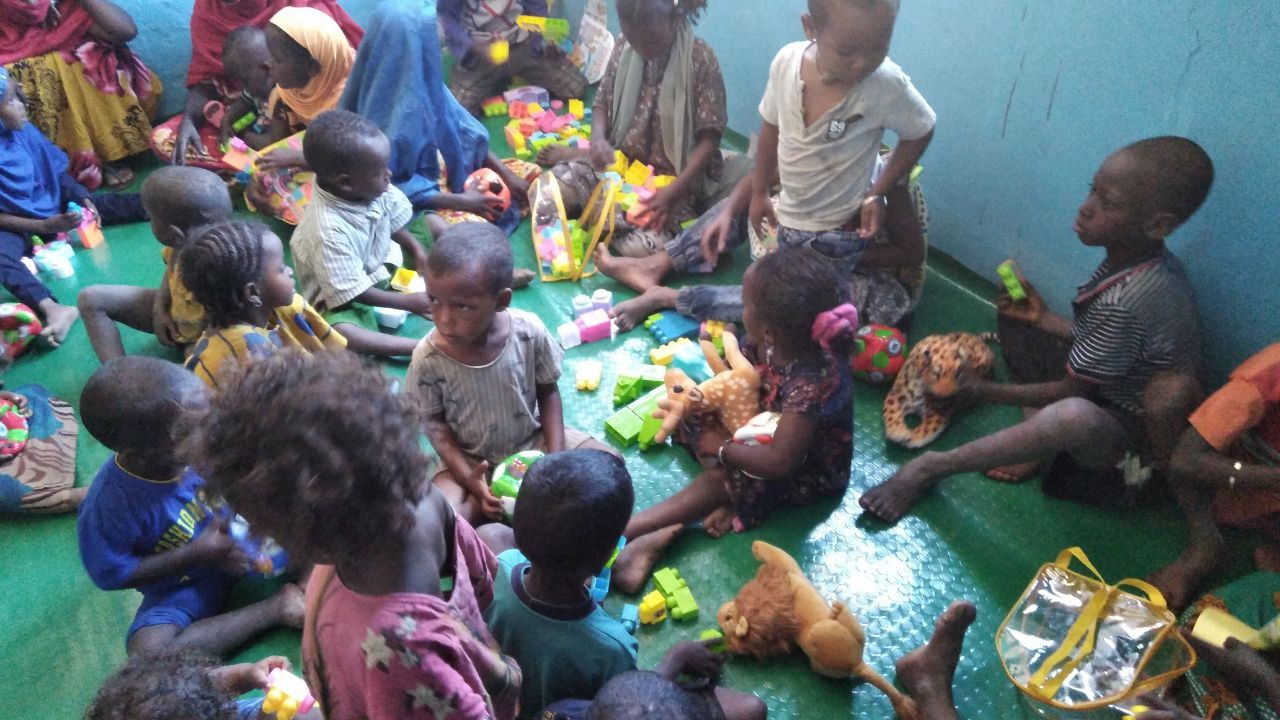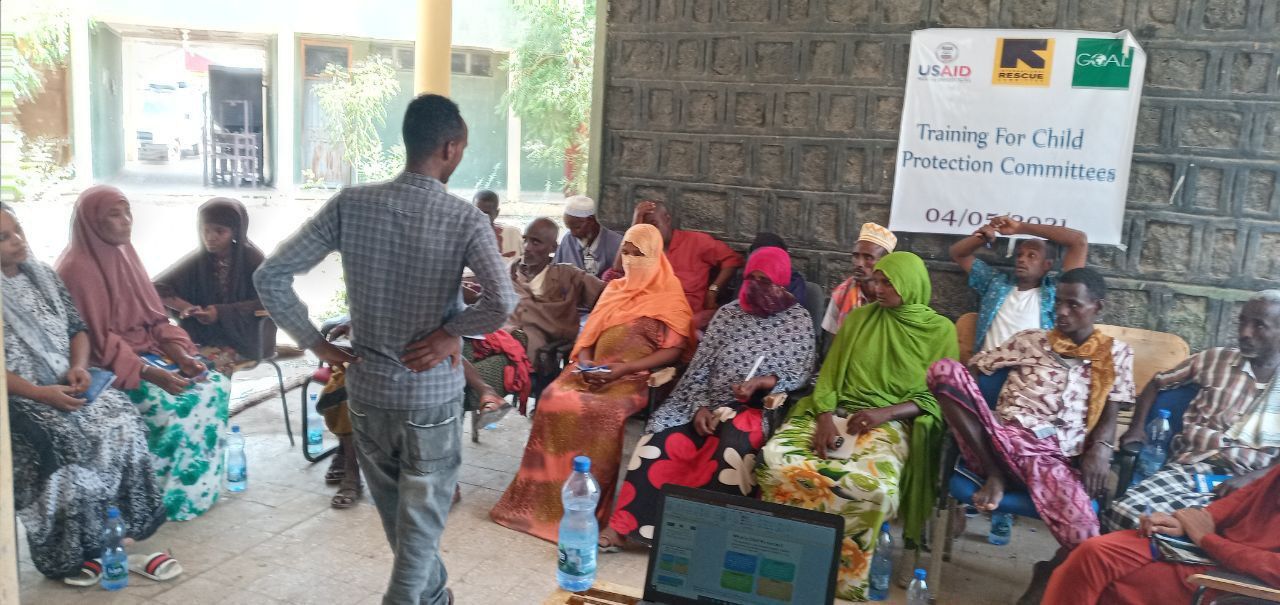 Blogs
Blogs
June 16, 2022 • 4 min read
GOAL’s Safeguarding Series showcases the dedicated and indispensable work of GOAL’s Safeguarding and Protection Teams. This first edition covers GOAL's safeguarding work in Ethiopia, where the number of people exposed to the risk of harm has significantly increased due to conflict.
Since November 2020, communities in the Tigray region of Ethiopia, home to more than 20 million people, have been devastated by ongoing conflict. Impacts on people’s livelihoods have been further exacerbated by chronic drought, with a third consecutive failed wet season severely affecting food security. The conflict has left over 91% of the population in urgent need of humanitarian assistance. Even before the conflict began, Tigray region had the highest poverty rate within the country.
Despite the recent truce declared by the Ethiopian government in an attempt to get aid into the region, the WHO has said that current supplies are too little to sustain life, and that people are starving to death. GOAL has been responding to the crisis, to alleviate severe malnutrition, threats to livelihoods, and increased protection risks to over 80,000 people, including children and refugees.
Although the war erupted in Tigray, the conflict also expanded to Afar, a region located in north-eastern Ethiopia, where more than 300,000 people have been displaced since December 2021. The UN has reported that the conflict in Afar has resulted in aid being blocked from entering Tigray, where so many thousands are suffering.
A Protection Crisis During Conflict
In Tigray, the conflict and drought has also precipitated a severe protection crisis, with an estimated two million people exposed to serious harm, including gender-based violence (GBV) and child abuse. The UNHCR reports that the conflict has resulted in a complete disregard for international laws and protection of civilians.
Regions including Tigray and Afar are experiencing extremely high rates of sexual violence of women and girls, especially as they have flee conflict zones and arrive into refugee camps or host communities. It is reported that women and girls are being sexually exploited in exchange for resources and money, and men are targeted for physical violence related to the conflict. In addition, the protection crisis is exacerbated by the lack of safe spaces as a result of damage to healthcare facilitates, and a breakdown of traditional reporting procedures within refugee camps.

A Child-Friendly Space (CFS) in northern Ethiopia.
GOAL’s Response
GOAL Ethiopia has partnered with the Development for Peace Organization (DPO) and Mothers and Children Multisectoral Development Organization (MCMDO) to implement a project which focuses on providing health, nutrition, protection and education interventions to internally displaced persons and other affected communities. The project aims to contribute to a substantial reduction of GBV and child protection issues, and is focused in the Gewane district of Afar, home to about 31,000 people.
In April 2022, a scheduled monitoring visit of the project was conducted by GOAL Ethiopia’s Safeguarding and Protection Team. Team members Geta Kessa and Desalegn Mekonnen reviewed the status of the project in addressing protection issues, as well as recognised existing safeguarding practices of partners and took corrective actions when necessary, including the provision of safeguarding training. The protection team conducted focus group discussions, observation visits and interviews with; beneficiary adults, school directors, Women and Children Affairs Department representatives and the respective partners’ staff, to review the project’s progress.
Improving Protection
GOAL Ethiopia Safeguarding and Protection Team is positive about what they’ve seen so far.
“The project has proven to improve the protection of children,” says Geta Kassa (Protection and Safeguarding Advisor). “The communities’ level of commitment in improving the protection of children has also stepped up favourably. Over 2,800 adults and children have engaged with GBV awareness-raising and risk mitigation activities, and the campaign has been disseminated through the region’s media: enhancing the understanding of GBV across the wider region.”
The project also received strong support of the local government and community who displayed a commitment to fight GBV and protection issues by engaging in sensitisation events and putting GBV at the forefront of their agenda.

Child Protection Committee Training in Ethiopia.
“Additionally, the project established child-friendly and women-friendly spaces,” said Desalegn Mekonnen, (Protection and Safeguarding Head) ”to increase women and children’s access to a safe environment and to promote their psychosocial well-being. The spaces served as a hub for psychosocial support and learning for women and children, which also helped to establish referral services to GBV survivors. In the long run, it can pave ways for improved understanding on GBV and can elevate women and girls’ movement to realise their rights.”
Furthermore, the team developed an action plan which outlined the key development areas for each partner which will be monitored on a regular basis.
Safeguarding at the Heart of Operations
GOAL has been working in Ethiopia since the early 1980s, implementing countrywide multi-sector humanitarian and development programmes across seven regions. Although development gains have been made, GOAL Ethiopia is committed to extending its child protection and GBV programming across the region, with six current active protection projects reaching over 94,000 adults and children. GOAL Ethiopia will continue to focus on strengthening child and women friendly spaces, case management and referrals, psychosocial support, and staff capacity building on GBV and child protection with its staff, partners and local community stakeholders.
Around the world, GOAL is committed to enabling an environment that promotes a strong safeguarding ethos and culture by ensuring that safeguarding is at the heart of all GOAL’s operations, especially during emergencies. For further information on safeguarding in humanitarian response, please visit https://www.goalglobal.org/safeguarding/
